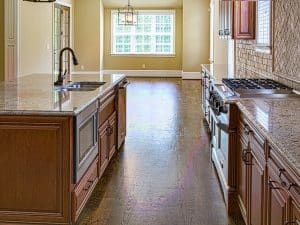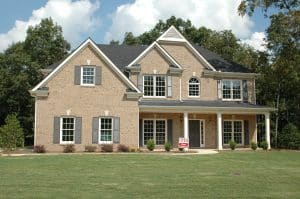3D-Printed Neighborhoods: The Future of Affordable Housing
The housing crisis is a global issue that affects millions of people, particularly in urban areas where the demand for affordable housing is high. Governments and organizations have been searching for solutions to this problem for years, but the answer may lie in a groundbreaking technology: 3D printing. With its ability to construct high-quality structures quickly and cost-effectively, 3D printing has the potential to revolutionize the housing industry. In this article, we will explore the concept of 3D-printed neighborhoods and how they could be the future of affordable housing.
The Current State of Affordable Housing
Before we dive into the details of 3D-printed neighborhoods, let’s first understand the current state of affordable housing. According to the United Nations, over 1.6 billion people live in inadequate housing and are unable to afford safe and decent homes. In the United States alone, there is a shortage of 7 million affordable and available rental homes for low-income renters. This shortage has only been exacerbated by the COVID-19 pandemic, leaving even more people vulnerable to eviction and homelessness.
The traditional methods of constructing homes, such as brick and mortar, are often time-consuming and expensive. This has made it difficult for governments and organizations to keep up with the demand for affordable housing. But with the advent of 3D printing technology, this dilemma may soon be a thing of the past.
What are 3D-Printed Neighborhoods?
3D-printed neighborhoods are large-scale housing developments constructed entirely using 3D printing technology. This innovative method involves using computer-controlled machines to build homes layer by layer, using a special type of concrete called “3D-printed concrete.” The concrete is specially formulated to be strong, durable, and able to withstand extreme weather conditions.
While 3D printing technology has been around for decades, it has only recently been applied to the construction industry. Its use in creating affordable housing is a relatively new concept, but one that has garnered a lot of attention and support from experts in the field.
The Benefits of 3D-Printed Neighborhoods
The use of 3D printing technology to construct affordable housing brings a plethora of benefits.
Cost-Effectiveness
One of the main advantages of 3D-printed neighborhoods is their cost-effectiveness. Traditional construction methods involve significant labor costs, but with 3D printing, the majority of the work is done by the machines. This reduces labor costs and makes the construction process much faster and more cost-effective. This, in turn, allows for the creation of more affordable housing units at a lower cost.
Speed
As mentioned earlier, 3D printing technology allows for the construction of homes at a much faster rate compared to traditional methods. A 3D printer can construct a home in a matter of hours, whereas a traditional construction project can take weeks or months. This not only saves time but also helps to address the urgent need for housing in many communities.
Flexibility and Customization
The flexibility of 3D printing technology allows for a high level of customization in the construction process. With the use of computer-aided design (CAD) software, architects and designers can create unique building designs that were previously impossible to achieve with traditional construction methods. This opens up new possibilities for affordable housing, such as designing homes that are specifically tailored to the needs and preferences of low-income families.
Sustainability
The use of 3D printing technology for construction also has a positive impact on the environment. Traditional construction methods rely heavily on materials such as wood and steel, which have a significant environmental impact. With 3D printing, only the necessary amount of material is used, reducing waste and minimizing the carbon footprint of the construction process.
The Future of Affordable Housing
While 3D-printed neighborhoods are still in their early stages, the potential impact they could have on the affordable housing crisis is immense. The cost-effectiveness, speed, and customization options of 3D printing make it a game-changer in the housing industry. Additionally, its potential to produce homes that are not only affordable but also sustainable could have far-reaching effects for communities around the world.
Some countries have already begun experimenting with 3D-printed neighborhoods. In 2019, Mexico printed its first 3D-printed neighborhood, providing 50 homes to low-income families. In the United States, the non-profit organization New Story has partnered with construction technology company ICON to create the world’s first 3D-printed community in Texas, providing homes to families in need at a significantly lower cost.
Conclusion
The concept of 3D-printed neighborhoods may seem like something out of a science-fiction movie, but it is becoming increasingly closer to reality. This innovative technology has the potential to address the global issue of affordable housing and provide a solution that is cost-effective, fast, and sustainable. With more research and development, 3D-printed neighborhoods could become the future of affordable housing and make a positive impact on the lives of millions of people around the world.









